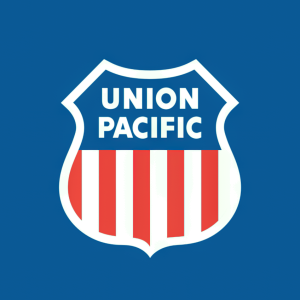Union Pacific Takes Additional Action to Alleviate Supply Chain Congestion
Union Pacific Railroad has announced proactive measures to address global supply chain congestion affecting goods movement across the U.S. The company will pilot a program through Dec. 31, offering a $60 refund per container for ocean carriers who gate containers on weekends at its Long Beach facility. This initiative is part of Union Pacific's efforts to improve fluidity in collaboration with key stakeholders. Additionally, they have increased gate access to 24/7 operations and utilized technology to enhance efficiency for drivers amid a nationwide driver shortage.
- Implemented a $60 refund for weekend in-gates, incentivizing container movement.
- Extended gate access to 24/7 operations, allowing more freight movement.
- Reopened terminals in Chicago and Houston, increasing inland storage capacity.
- Leveraged technology like the UPGo app to improve efficiency for drivers.
- None.
Insights
Analyzing...
OMAHA, Neb., Oct. 25, 2021 /PRNewswire/ -- Union Pacific Railroad today announced additional proactive steps to reduce global supply chain congestion, helping restore fluidity for goods and products moving across the United States from West Coast ports.
To encourage weekend in-gates and reduce backlog at the ports, Union Pacific will run a pilot program through Dec. 31, offering a
Union Pacific recently increased gate access to 24/7 at ICTF, adding 20 weekend hours, providing customers every opportunity to move freight in and out. The move supports the Ports of Los Angeles' and Long Beach's recent move to 24/7 operations.
This refund is another example of Union Pacific's continued efforts to work proactively with key stakeholders in the transportation industry and its customers, finding creative solutions to ease supply chain congestion. Other steps Union Pacific has taken include the reopening of its Global III terminal outside Chicago and its Englewood terminal in Houston, providing additional inland storage capacity. Union Pacific has also shuttled freight to less stressed terminals within the same metroplex to maximize freight availability for its customers.
With the nationwide driver shortage being a key factor in the congestion, Union Pacific is leveraging technology with its UPGo app to decrease the time it takes a driver to drop off and pick up intermodal containers, and Union Pacific is utilizing subsidiary drayage capacity through its LOUP subsidiary to help shippers.
"It's critical we get drivers back on the road, and the app allows them to complete critical tasks, such as pre-registering their box and getting real-time parking information before they arrive," said Kari Kirchhoefer, vice president – Premium, Marketing and Sales. "We're also doing things like creating uniform signage at of our facilities, so it's easier to find what they need, and get help, if necessary."
Union Pacific is just one piece of the supply chain, situated in the middle between ocean carriers, distribution centers, and drayage drivers who control the critical "first and last miles." Although the middle miles remain fluid, Union Pacific believes it has a responsibility as a leading transportation company to support and facilitate fluidity at all levels of the supply chain.
ABOUT UNION PACIFIC
Union Pacific (NYSE: UNP) delivers the goods families and businesses use every day with safe, reliable and efficient service. Operating in 23 western states, the company connects its customers and communities to the global economy. Trains are the most environmentally responsible way to move freight, helping Union Pacific protect future generations. More information about Union Pacific is available at www.up.com.
![]() View original content to download multimedia:https://www.prnewswire.com/news-releases/union-pacific-takes-additional-action-to-alleviate-supply-chain-congestion-301407897.html
View original content to download multimedia:https://www.prnewswire.com/news-releases/union-pacific-takes-additional-action-to-alleviate-supply-chain-congestion-301407897.html
SOURCE Union Pacific Corporation








